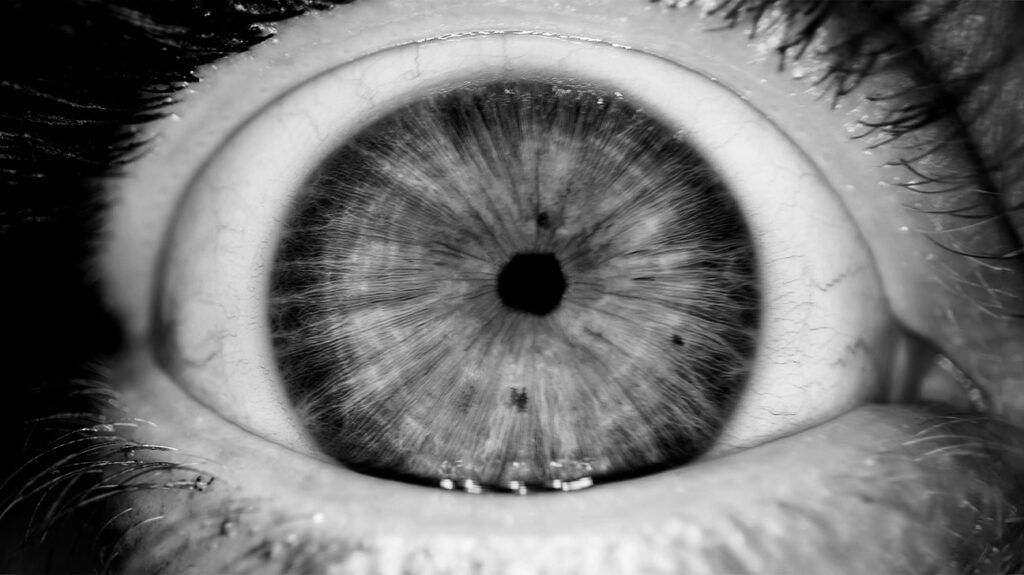Pinpoint pupils occur when the pupils shrink to a small size. This can be due to various conditions and medications, such as prescription opioids, hypertension medications, and eye inflammation.
In typical conditions, the pupils change size to let in the right amount of light. In the dark, they open wider or dilate to let in more light. In bright light, they get smaller or constrict to prevent too much light from entering.
However, some medical conditions and certain drugs can cause the pupils to shrink to a pinpoint size.
The medical term for pinpoint pupils is miosis or myosis, from an ancient Greek word “muein,” meaning “to close the eyes.”
This article looks at the potential causes and treatment options for pinpoint pupils.

Some medications have opioids or narcotics in them. Opioids, including morphine, are drugs commonly prescription medication for pain relief. Opioids can affect a person psychologically and are
Pinpoint pupils can be a sign of opioid overdose, alongside:
- a pale or clammy face
- blue or purple fingernails
- slow breathing
- slow heartbeat
Learn more about how opioids can affect the eyes.
Treatment
Opioid overdoses can be fatal without treatment. Anyone with a suspected overdose needs emergency medical attention.
A doctor will prescribe a medication called naloxone to the person experiencing an overdose. This medication blocks the effects of opioids.
A doctor might also refer them to a treatment and recovery program if they have a drug dependency.
Some medications prescribed for high blood pressure, which is known as hypertension, can also cause pinpoint pupils.
Treatment
Anyone who thinks their hypertension medication may be causing pinpoint pupils needs to consult their doctor. The doctor may be able to prescribe a different form of medication.
Help is out there
If you or someone you know is in crisis and considering suicide or self-harm, please seek support:
- Call or text the 988 Lifeline at 988 or chat at 988lifeline.org. Caring counselors are available to listen and provide free and confidential support 24/7.
- Text HOME to the Crisis Text Line at 741741 to connect with a volunteer crisis counselor for free and confidential support 24/7.
- Not in the United States? Find a helpline in your country with Befrienders Worldwide.
- Call 911 or your local emergency services number if you feel safe to do so.
If you’re calling on behalf of someone else, stay with them until help arrives. You may remove weapons or substances that can cause harm if you can do so safely.
If you’re not in the same household, stay on the phone with them until help arrives.
Heroin is a highly addictive recreational opioid. While taking the drug, the pupils can become smaller in size. Other symptoms of heroin use and addiction include:
- bloodshot or red eyes
- weight loss
- extreme sleepiness and falling asleep at inappropriate moments
- secretive behavior
- lack of motivation
- thoughts of self-harm or suicide
- slurred speech
- paranoia
- extreme itchiness
People using heroin
Heroin can also cause respiratory failure, which is when a person stops breathing, or death by inhaling vomit, as it limits someone’s ability to cough properly.
Treatment
A person with a heroin dependency needs to consult a doctor or a local drug treatment center.
A healthcare professional will ask about their drug use, family and housing situation, and any other contributing factors the person may wish to disclose. The doctor may request a urine or saliva sample.
Treatment options are available, depending on the person’s needs. These include:
- talk therapy, cognitive behavioral therapy (CBT), or other counseling
- medications such as methadone and naloxone
- support groups
- detoxification
Horner’s syndrome is a rare condition due to a tumor, a stroke, or damage to the central trunk of the brain, or the brainstem. It affects a type of nerve called the sympathetic nerve.
Symptoms include:
- pinpoint pupil on
one sideTrusted Source of the face - drooping of the upper eyelid over the affected eye, known as ptosis
- an inability to sweat on one side of the face, in some cases
Treatment
Treatment for Horner’s syndrome can depend on its cause. In some cases, treatment may be necessary.
Anterior uveitis is inflammation of the eye’s middle layer, including the iris. It
Although it can affect anyone, it mostly occurs in people
It can appear in one or both eyes. Other symptoms include:
- pain in the eye
- blurred vision
- light sensitivity
- eye redness
Treatment
Treatments for pinpoint pupils due to anterior uveitis include using eye drops to open up the pupil or using eye drops that contain steroids to reduce inflammation.
A doctor or eye specialist, known as an ophthalmologist, may refer a person for further testing if they suspect an underlying medical condition to be the cause.
Pinpoint pupils after a head injury
Head injuries can cause severe and even life threatening complications, even if the effects are not immediately apparent. Anyone who has experienced a head injury needs to seek immediate medical attention.
Exposure to pesticides known as organophosphates can cause pinpoint pupils in
- excessive saliva
- retching and vomiting
- coughing
- breathing difficulties
- sweating
- muscle weakness
- rapid pulse
- sleepiness
Treatment
Anyone who thinks they or someone else has been poisoned by a pesticide, household cleaner, or other toxic product requires immediate medical attention.
If a person is unconscious or vomiting, it is important to roll them onto their side if possible and keep their head tilted slightly downward. This position will ensure any vomit can escape without the person choking on it.
Medical treatments for poisoning include:
- activated charcoal
- antidotes, if possible
- anti-seizure medications
- sedatives
- a breathing machine known as a ventilator
Pinpoint pupils are not a disease alone but can indicate an underlying medical problem. Anyone experiencing pinpoint pupils with no apparent cause needs to speak with a doctor immediately.
Many of the causes of pinpoint pupils are serious medical conditions, such as opioid dependency or pesticide poisoning. Early intervention can help prevent life threatening complications.
Even anterior uveitis can cause permanent eye damage and blindness without treatment. However, it is usually a
The outlook for conditions that cause pinpoint pupils improves when people seek treatment quickly and follow a doctor’s advice for a complete recovery.
The following are commonly asked questions about pinpoint pupils.
What do pinpoint pupils indicate?
Pinpoint pupils can indicate an underlying medical condition, such as a severe head injury or anterior uveitis. It can also develop as a result of prescription medications, including prescription opioids and some high blood pressure medications.
What emotion causes pinpoint pupils?
Sadness can result in smaller pupils. Research from 2018 found that crying can trigger the pupillary system, resulting in smaller pupils.
Pinpoint pupils can be a side effect of certain medications, such as high blood pressure medications or prescription opioids.
They can also signal an underlying medical condition, such as stroke, head injury, or eye condition.
A person needs to seek medical help immediately if they develop pinpoint pupils, as some causes can have severe complications.


